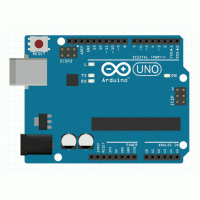Microchip launched a new generation of ATtinys. Is it worthwhile to consider them for your next DIY project?
Continue readingTag: ATmega328P

ATmega328P: Fake or Real?
The featured image of this blog post is by PublicDomainPictures from Pixabay.
Recently, I bought some ATmega328P-PU (DIP packages) chips in China and was concerned that they might be counterfeit, given that three years ago some ATmega328P clones, which did not support nano-power, had been found on Pro Mini boards. The first check looked as if they were fake chips, but apparently, they were the real thing. but they seem to work fine.

Synchronism
The featured image of this blog post is by Steve Buissinne on Pixabay
In 2013, we found the Seattle-Köln Exchange Multicache, which requires cooperation between geocachers from Cologne and Seattle. This led to the idea of a geocache where two people at different locations had to press a button at exactly the same time in order to be able to open their respective cache boxes. And now the idea has become a reality!
Continue reading
Parasitic Power Supply
The featured image of this post is by Emphyrio on Pixabay
In parasitic power supply mode, a device sucks its juice from a data line instead of from the power rail. This can be intended or unintended. In the latter case, all sorts of funny things can happen.
Continue reading
Surprise, Surprise!
The featured image of this post is by Albert Guillaume – Gils Blas, 24 décembre 1895, Public Domain, Link
When you develop a tool for a protocol that is undocumented, it is not surprising that you will encounter situations you will not have be anticipated. This was exactly what I experienced developing the hardware debugger dw-link, which connects debugWIRE MCUs to the GDB debugger. Although a substantial part of the debugWIRE protocol has been reverse-engineered, I encountered plenty of surprising situations: Split personality MCUs, stuck-at-one bits in program counters, secret I/O addresses, half-legal opcodes, and more.
Continue reading
Timing the Timekeeper
The featured mage of this blog post is by Gerd Altmann from Pixabay
What is the overhead imposed by the millis() interrupt? And can we get rid of it?

Saving Energy by Choosing the Right MCU
Featured image is by Projekt_Kaffeebart from Pixabay
In this post, I take a look at whether there are significant differences of power consumption between the different AVR MCUs. I will look at the nominal values and also measure the power consumption in reality.
Continue reading
Running on Batteries
Featured image by Andreluiz Cunha from Pixabay.
Running on batteries does not carry your Arduino project very far? Well, when you want to run an Arduino project on batteries, you have to spend some thought on minimizing power consumption. Here we will look at what you can do when you use an AVR MCU. Often you will be able to reduce the average current consumption to a few microamps!
Continue reading
